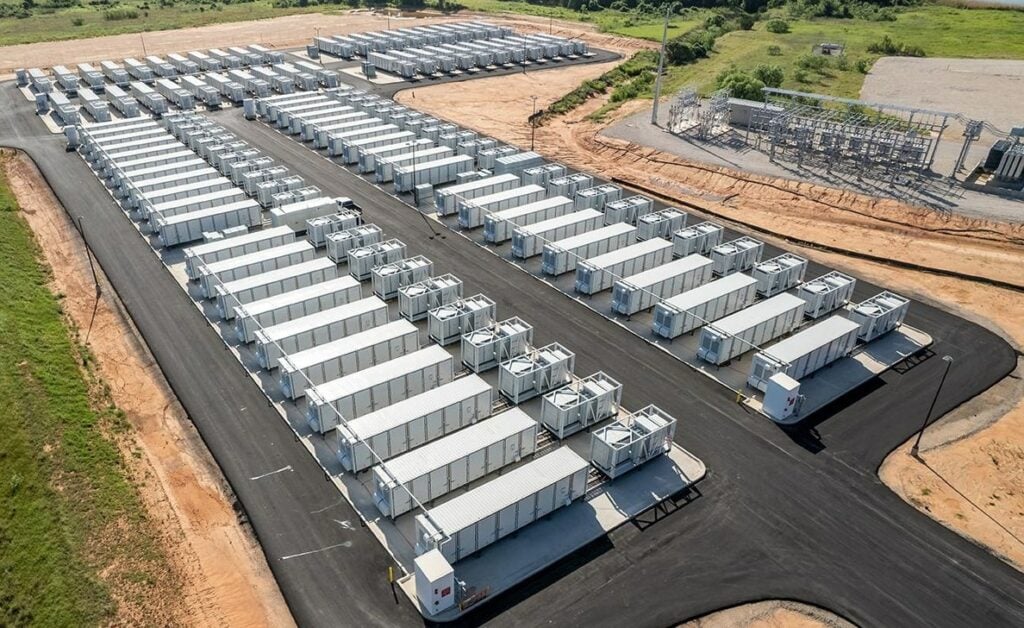
We hear from industry sources about the upcoming Real-Time Co-Optimization Plus Batteries (RTC+B) market changes in ERCOT, Texas, and why they represent a fundamental shift in how BESS will operate in one of the world’s largest and most lucrative energy storage markets.
The reform has two parts, Real-Time Co-Optimization (RTC) and Plus Batteries (+B), with the overall combined package called RTC+B. It is hugely significant for battery energy storage system (BESS) projects operating in Texas, where the grid is run by the Electric Reliability Council of Texas, or ERCOT.
And unlike most energy market reforms we’ve come across, it appears to be widely welcomed and agreed upon by energy industry stakeholders. ERCOT thinks it will reduce system costs by 13-19%.
RTC is a new process whereby energy and Ancillary Services will be dispatched interchangeably in the Real-Time Market, ERCOT says. Currently, ERCOT procures Ancillary Services in the Day-Ahead Market and does not typically move them between resources in the Real-Time Market.
Try Premium for just $1
- Full premium access for the first month at only $1
- Converts to an annual rate after 30 days unless cancelled
- Cancel anytime during the trial period
Premium Benefits
- Expert industry analysis and interviews
- Digital access to PV Tech Power journal
- Exclusive event discounts
Or get the full Premium subscription right away
Or continue reading this article for free
That alone is hugely significant for BESS, which makes most of its money from Ancillary Services and will now shift from being system-wide to being dispatched on a locational basis for every five minutes.
Additionally, the Plus Batteries (+B) change will treat BESS as single units rather than both generation and load, which Jay Jayasuriya, principal at Sendero Consulting, explained to Energy-Storage.news discussing the reforms as a whole.
Market trials run from May to November 2025 with a go-live date of 4 December, 2025.
Why ERCOT is bringing in RTC+B
Jayasuriya started off by explaining why Real-Time Co-Optimization Plus Batteries (RTC+B) is being brought in in the first place.
“For the RTC part it’s really because prior to this you would commit your assets in the Day-Ahead Market (DAM) and then those assets were never really optimised in Real-Time. They would be deployed to meet the Real-Time Market (RTM) need, but there was no way for market participants to get the assets optimised in real time to take advantage of real-time market conditions,” he said.
“For the +B part, it’s because so far batteries have been treated as two separate assets. There’s a kind of this dual model in ERCOT where it is treated as a generator when it’s discharging, but it’s treated as a load when it’s recharging. That made it hard to optimise the battery.”
“The reform allows the batteries to act in the market as a single unit designated as a battery. All that means is that whatever the market participants have gotten used to now, they have to change their kind of market operations to take advantage of the new condition. Everyone got used to the old way of doing it.”
The move is widely agreed to improve the efficiency of dispatching resources and will mean more precise price signals from the Real-Time Market. It could potentially reduce opportunities for arbitrage between the Day-Ahead and Real-Time, because Real-Time prices should better reflect actual system needs.
Fundamental change in approach to BESS optimisation
Christian Hofer, VP market operations for BESS developer and owner-operator Key Capture Energy (KCE), discussed the change in a panel discussion on ERCOT at the Energy Storage Summit USA 2025 in Dallas, Texas, in late March.
Speaking on stage, he described it as a “fundamental change in the way that not only people operate their units in the real time, but also how they understand the relationship between the day ahead and real time commitments.”
Expanding on this, he said: “Right now battery operators have to think: Should we essentially collect rents for the day ahead and then potentially get dispatched in the real time, or do we want to hold out and just play the real time TB-2 or TB-4 game, depending upon your battery.”
“Now, you aren’t really making that kind of decision anymore. Now you are looking at your obligations on a five minute basis, and that opens up a whole new world of opportunities, but also potential pitfalls.”
Jayasuriya added that the move will allow the activity and commitment of assets to be better aligned with the power prices, since power prices already change every five minutes, which the new dispatching aligns with.
‘Any reform like this has challenges’
For BESS, the new departure from the generator/load framework is good but still comes with challenges.
“Operating it as a single system takes away a lot of the risk and timing risk of recharging. But at the same time, it’s just a lot of work around making sure your systems are alright. If you’re a market participant, you’re dependent on your market communication system sending the right set of data into the ERCOT systems and being connected in real-time to do that well,” Jayasuriya said.
“In the market trials, they’re literally gonna go to every participant and make sure telemetry data is coming in, that all the bids are coming in properly and that the system at ERCOT is also working right.”
“Anytime that a market change like this comes around, it’s a lot of change. But the hope is obviously from a battery perspective that it is a lot more efficient and reduces the risk for BESS operators.”
There is over 7GW of grid-scale BESS online in Texas today, with much more coming online in the next few years.
